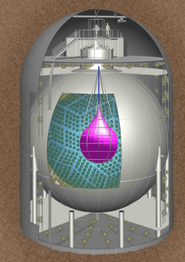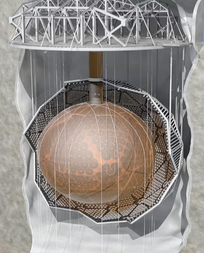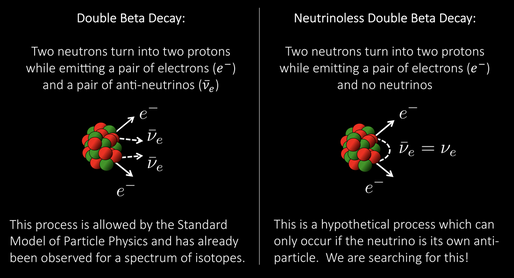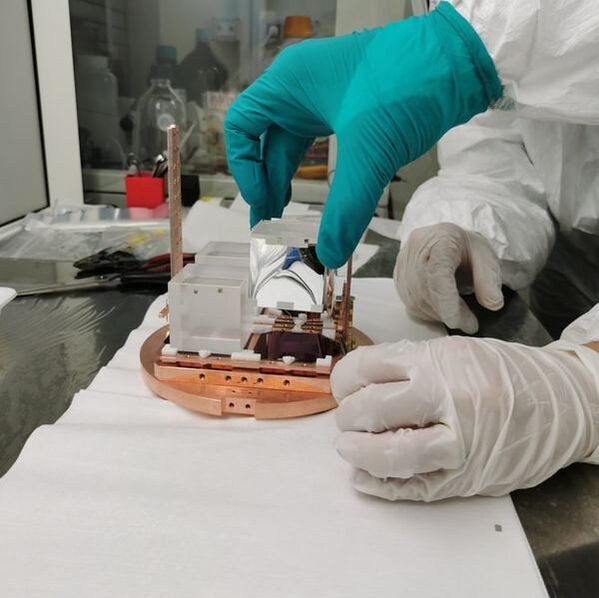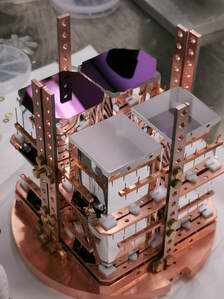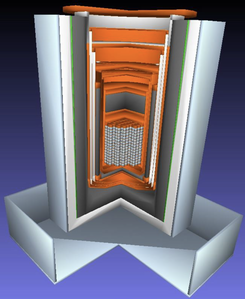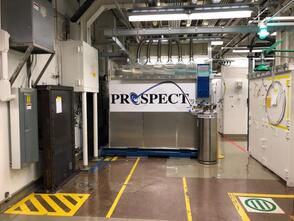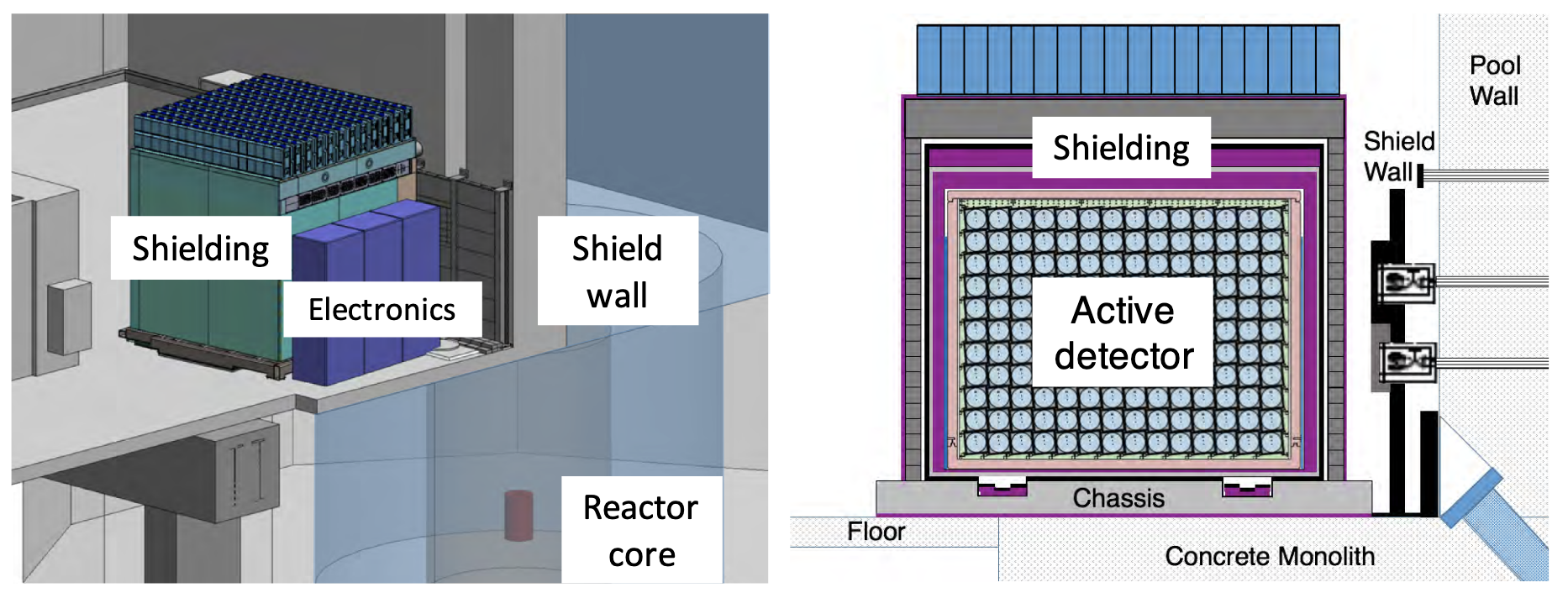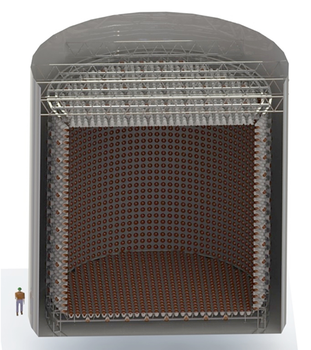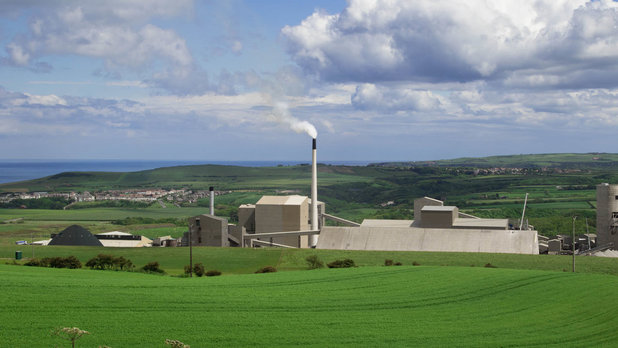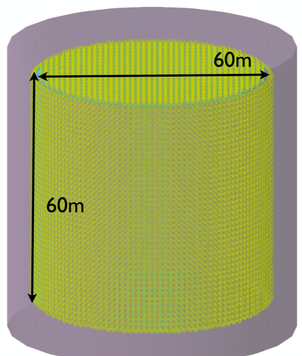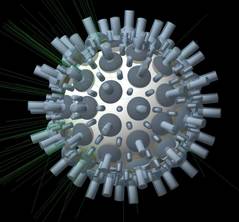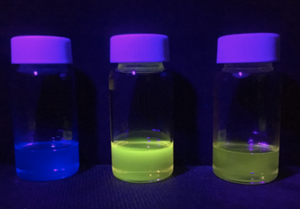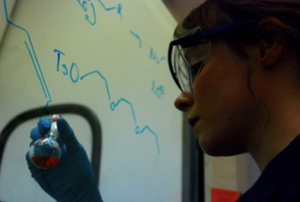Research
Below is a list of neutrino experiments we are actively involved in.
KamLAND-Zen and SNO+
KamLAND-Zen (far left) is an upgrade to the original Kamioka Liquid scintillator Anti-Neutrino Detector (KamLAND) and is well known for its first observation of reactor neutrino oscillations. A miniature balloon filled with enriched Xenon gas dissolved into liquid scintillator has been deployed at the center of the detector.
The SNO+ experiment (middle) is an upgrade to the original Sudbury Neutrino Observatory (SNO) which is well known for its discovery of neutrinos changing flavors. SNO+ is planning to fill the detector with Tellurium-doped liquid scintillator.
Both experiments are searching for a very rare nuclear decay called neutrinoless double beta decay (far right). Additionally, KamLAND-Zen and SNO+ have sensitivity to a variety of physics such as reactor antineutrino oscillations, low-energy solar neutrinos, and geoneutrinos, and supernova neutrinos.
The SNO+ experiment (middle) is an upgrade to the original Sudbury Neutrino Observatory (SNO) which is well known for its discovery of neutrinos changing flavors. SNO+ is planning to fill the detector with Tellurium-doped liquid scintillator.
Both experiments are searching for a very rare nuclear decay called neutrinoless double beta decay (far right). Additionally, KamLAND-Zen and SNO+ have sensitivity to a variety of physics such as reactor antineutrino oscillations, low-energy solar neutrinos, and geoneutrinos, and supernova neutrinos.
CUPID (CUORE Upgrade with Particle IDentification)
CUPID is an upgrade of the CUORE experiment, aiming at searching for neutrinoless double beta (0νββ) decay with Li2MoO4 scintillating crystals enriched in 100Mo. The crystals are operated as cryogenic detectors with zero-background for their entire life cycle, which provides the fastest increase in sensitivity to neutrinoless double beta decay as data is collected. The zero background condition is achievable via the particle discrimination in the scintillation channel. CUPID will use the existing infrastructure for the CUORE experiment in Laboratori Nazionali del Gran Sasso (LNGS).
PROSPECT
PROSPECT is a reactor neutrino experiment positioned a very short distance from the HFIR nuclear reactor core at Oak Ridge National Lab. The detector made precision measurements of the energy spectrum of antineutrinos emitted from the HFIR reactor and will soon release new results for the flux. PROSPECT continues to search for the oscillation signature of sterile neutrinos and test our understanding of the emission of antineutrinos from the fission products in a nuclear reactor. These measurements will test our understanding of the Standard Model of Particle Physics, deepen our understanding of nuclear processes in a reactor, and help develop technology for the remote monitoring of nuclear reactors for safeguard and non-proliferation.
WATCHMAN-AIT
The Water Cherenkov Monitor of Antineutrinos - Advanced Instrumentation Testbed (WATCHMAN-AIT) is a gadolinium-doped water Cherenkov neutrino detector that will support the development of detection hardware and algorithms to enable improved nonproliferation detector capabilities for remote monitoring of nuclear reactors. The goal is to demonstrate the capability of monitoring reactor operations, like the turning ON and OFF of a single core. In addition to reactor monitoring, the experiment is also pursuing R&D focused on the use of Water-based Liquid Scintillator (WbLS), large format fast photosensors such as the Large Area Picosecond PhotoDetectors (LAPPDs), and improved conventional Photomultiplier Tubes. These developments will allow WATCHMAN to serve as a 5% scale prototype for the proposed THEIA experiment. See the New York Times press release!
THEIA
Theia is a concept for a future detector filled with approximately 50,000 tons of water-based liquid scintillator (WbLS). Theia would combine the capability of a Water Cherenkov detector with a liquid scintillator detector to enable a very broad range of neutrino science involving high-energy neutrinos produced by particle accelerators down to very low energy neutrinos produced in the core of the Sun. The possibility of loading the Theia detector with neutrinoless double beta decay isotopes is of great interest. See the new white paper for more details!
NuDot
NuDot is an idea to suspend quantum dots made from neutrinoless double beta decay isotopes in liquid scintillators. Quantum dots are semiconductor particles having sizes of roughly several nanometers and can be tuned to emit light over a broad spectrum of wavelengths. The ultimate goal of using quantum dots is to demonstrate the separation of Cherenkov rings from scintillation light. In a large detector, this would enhance the neutrinoless double beta decay signal and suppress backgrounds.

